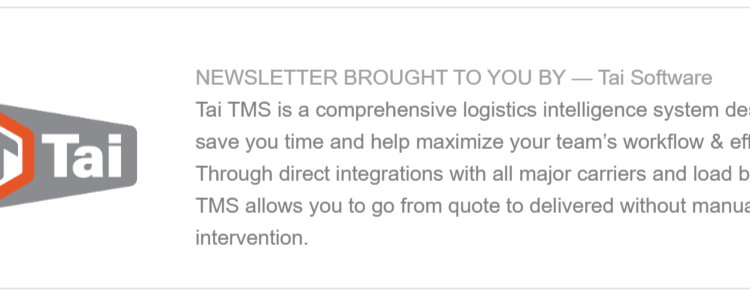Welcome to Check Call, our corner of the internet for all things 3PL, freight broker and supply chain. Check Call the podcast comes out every Tuesday at 12:30 p.m. EDT. Catch up on previous episodes here. If this was forwarded to you, sign up for Check Call the newsletter here.
Inside this edition: Sustainability measures become costly; fully automated warehouses could be the answer; and Walmart’s freshest collab.
Some interesting news came out of the Securities and Exchange Commission.SEC Chair Gary Gensler reportedly is looking to scale back some of the proposed ruling on emissions disclosures the SEC published last March. It turns out 15,000 comments, the most in SEC history for any ruling, are enough to get the commission to rethink some things. The original proposal said that scope 1, 2 and 3 emissions would have to be disclosed.
The new guidelines haven’t been fully decided yet, but Gensler has alluded to the agency considering scaling back its emissions disclosure rule. Given the complexity of tracking and managing scope 3 emissions — the result of activities from assets not owned or controlled by the reporting organization but that the organization indirectly affects in its value chain, per the EPA — many companies don’t have as many capabilities for reporting.
Sustainability measures are going to be a vital part of the supply chain from here on out. In some way, shape or form, shippers, brokers and carriers are going to have to have a way to handle sustainability measures. On the carrier side, shipping carriers have created sustainable transport operations as companies look for carbon-slashing opportunities. The Wall Street Journal says the gap between carriers offering sustainable options and those choosing the sustainable option highlights a growing fault line in the supply chain.
Traditional 3PL warehouses are out, automation is in. This labor market is no joke. It’s hard out here for warehouse staffing. The traditional model is labor-intensive and prone to human error, which can lead to higher costs, slower delivery times and lower customer satisfaction. What if I told you there was a better way?
Fully automated 3PL warehouses are going to become the warehouses of the future. One of the key benefits of fully automated 3PL warehouses is improved accuracy and efficiency. Automated systems — such as robotics, conveyors and automated storage and retrieval systems — can perform tasks with a high degree of precision and speed, reducing errors and delays.
For example, robots can handle repetitive and physically demanding tasks, such as palletizing and de-palletizing, while automated conveyors can transport goods quickly and efficiently throughout the warehouse. This can lead to faster turnaround times, lower inventory costs and improved order accuracy, which can translate into higher customer satisfaction and repeat business.
A fully automated warehouse could be the competitive edge that beats the competition. It’s like having a secret weapon. The competition has already jumped on it. Don’t be the one left holding the bag.
Market Check. As if California hasn’t had enough issues with dramatic weather, the most recent bout of snow-covered mountains and historic rainfall has caused flooding that has had a significant negative impact on the state’s harvest season and transportation. California is a major agricultural state, producing a significant portion of the nation’s fruits, vegetables and nuts. A lot of that produce comes to the rest of the country via refrigerated freight. The Reefer Outbound Tender Volume Index is at the lowest rate for the past three years. Typically this time of the year there is a spike in outbound tender volumes in California. This rain has caused significant problems and delays for harvesting that all consumers will see in the grocery store.
Who’s with whom? Walmart has dropped the freshest collab with Packsize. Packsize provides the perfect-sized box for products on demand. The Ultra 5 can produce up to 600 boxes an hour while cutting down on wasted cardboard. Basically, the Packsize machine sits on the warehouse floor, creates the perfect-sized box for goods, builds the box for workers and gives it to them with the flaps down to speed up packaging.
The whole process of building a box, packing it and then getting a label on it is about 30 minutes, while using less cardboard waste and maybe working toward some of those sustainability goals. Employees have to waste less time picking the right package and it improves freight charges as the size of the box is more proportional to the weight inside of it, lessening the chance of cubing out in a trailer and getting hit with a charge.
The more you know
Tijuana man sentenced to prison for ‘double-brokering’ scheme targeting San Diego truckers
Why is it important to monitor your commodity codes regularly?
Borderlands: Truck driver salaries in Mexico averaged $4,400 in 2023
Court revives Uber/Postmates fight against AB5 for app-based drivers
The DFW difference in logistics real estate
The post Check Call: Sustainability at what cost? appeared first on FreightWaves.














